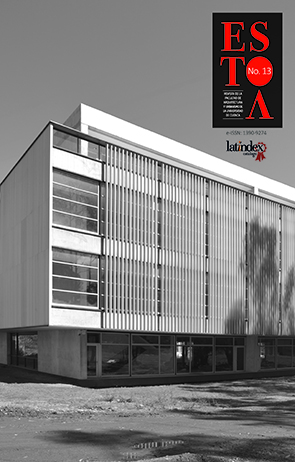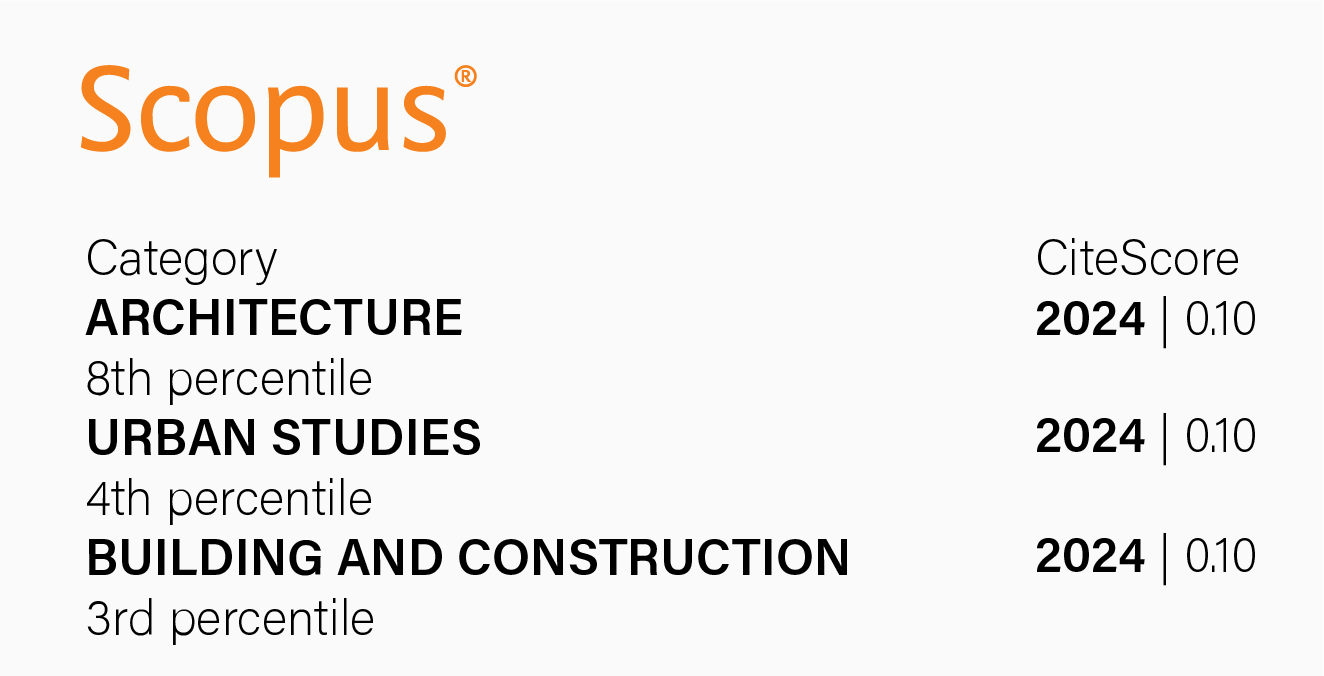Cut and paste: The first uses of collage and photomontage in the representation of modern architecture
DOI:
https://doi.org/10.18537/est.v007.n013.a03Keywords:
Avant-garde, Collage, Cubism, Modern Movement, PhotomontageAbstract
The graphic techniques of collage and photomontage, born within avant-garde art of the 1920s, mainly in Cubism, spread through and permeated all other arts, including architecture. Based on cutting and pasting elements or remnants of diverse materials in new combinations to express novel artistic principles and meanings, these apparently simple techniques offered strong potential for design and conceptualisation. They were widely used by some of the most important figures in Russian Constructivism, the Bauhaus and the Modern Movement, such as Frank Lloyd Wright, Le Corbusier and Mies van der Rohe.
Downloads
References
Aragón, L. (2001). Los collages, Madrid, España: Síntesis.
Barbero, M. (2002). De la emulsión al pixel. La nueva definición de la imagen en el siglo XX, en J.J. Gómez (Coord.), Máquinas y herramientas de dibujo (pp. 349-378), Madrid, España: Cátedra.
Bock, M. (1986). De Stijl y la ciudad, en De Stijl: 1917-1931. Visiones de utopía (pp. 197-205), Madrid, España: Alianza Forma.
Cohen, J.L.; Cooke, C.; Strigalev, A.A.; y Tafuri, M. (1994). Constructivismo ruso. Sobre la arquitectura de las vanguardias ruso-soviéticas hacia 1917, Barcelona, España: Ed. del Serbal.
Cohen, J.L. (2001). Anhelos alemanes de América. AV Monografías, (92), 75-105.
Fontán, M. y Capa, A. (2017). Lyonel Feininger (1871-1956). Madrid, España: Fundación Juan March.
Gombrich, E. H. (1950). La Historia del Arte. Madrid, España: Debate, (16ª ed., 1997).
Lissitzky-Kuppers, S. (1968). El Lissitzky. Londres, Reino Unido: Thames and Hudson.
Lodder, C. (1983). Russian Constructivism. Connecticut, EE.UU.: Yale University.
Molina, S. de., (2014). Collage y arquitectura: la forma intrusa en la construcción del proyecto moderno. Sevilla, España: Recolectores Urbanos Ed.
Molina, S. de. (2016). Hambre de arquitectura. Necesidad y práctica de lo cotidiano. Madrid, España: Ediciones Asimétricas.
Mácel, O.; Meriggi, M.; Schimidt, D.; y Volcok, J. (2007). Una città possible. Architetture di ivan Leonidov. 1926-1934. Milano, Italia: TriennaleElecta.
Maderuelo, J. (2014). El collage: una fuerza inconcebible. En S. de Molina (Ed.) Collage y arquitectura: la forma intrusa en la construcción del proyecto moderno (pp. 9-12), Sevilla, España: Recolectores Urbanos Ed.
Rowe, C. y Koetter, F. (1981). Collage City, Barcelona, España: Gustavo Gili.
Scharf, A. (1994). Arte y fotografía. Madrid, España: Alianza Forma.
Scully, V. (1987). Le Corbusier, 1922-1965. La vía pública. AV Monografías, (9), 14-26,.
Tartás, C. y Guridi, R. (2013). Cartografías de la memoria. Aby Warburg y el Atlas Mnemosyne. EGA Expresión Gráfica Arquitectónica, (21), 226-235.
Vallespín, A., Cervero, N., y Cabodevilla-Artieda, I. (2017). Los collages de la Casa Resor de Mies van der Rohe como transparencia fenomenal. EGA Expresión Gráfica Arquitectónica, (31), 140-149.
VV.AA. (1982). Georque Braque. Les papiers collés, (catálogo). París, Francia: Centro George Pompidou.
VV.AA. (2009). Mies van der Rohe. Casas Houses. Revista 2G, (48-49).
Published
How to Cite
Issue
Section
License
The Journal declines any responsibility for possible conflicts derived from the authorship of the works that are published in it.
The University of Cuenca in Ecuador conserves the patrimonial rights (copyright) of the published works and will favor the reuse of the same ones, these can be: copy, use, diffuse, transmit and expose publicly.
Unless otherwise indicated, all contents of the electronic edition are distributed under a Creative Commons Attribution-NonCommercial-ShareAlike 4.0 International License.




